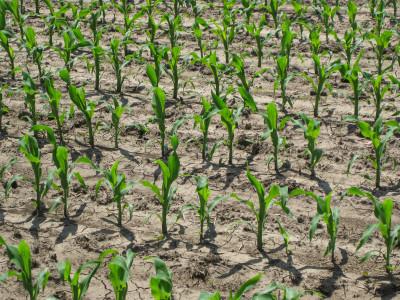Gas prices have dipped below $2.50 per gallon, an all-time low in the memory of most Grinnell college students, but this is not great news for Iowa farmers. As the price of oil goes down, the demand for biofuels goes down as well, because the cost advantage of blending with ethanol decreases.
Publication of the market outlooks, an estimation of the farm prices of corn and other crops for the year, has begun. According to AgWeb, economists of Kansas State University predict corn to value only $4.15 a bushel this year. While the predicted corn value was $6.89 last year, the 2014 harvest was very successful, creating a demand issue as the markets were flooded.

There are many other factors that affect the economics of corn farming, including the year’s predicted weather, as well as demand for exported distiller’s grain, feed and meat.
“Here in Iowa and Illinois we’re going to have a picture-perfect year, just what we don’t need,” said local Grinnell farmer Mark Dimit. “As far as the overall outlook, it looks kind of bad. The world has overproduced, and it’s not just corn, it’s wheat, it’s soybean, it’s oats. … There’s not one market today that is really powerfully strong, and generally that doesn’t happen.”
Outlook predictions begin around December, when farmers begin purchasing their inputs, and continue to change and become increasingly more accurate in February and March, when farmers have to start making decisions about crop insurance and other farm programs.
“In the next 45 days … I will probably cut back on corn. If I had to do it today, I would cut back on corn and add soybeans, just in terms of risk exposure,” Dimit said.
Another factor that has to be taken into account is soil health and nutrients. Planting corn one year on fields that grew soybeans the year before makes growing less work because soybeans leave behind nitrogen credits. Growing corn where corn was grown the previous year (corn on corn), requires 50 or more pounds of nitrogen and a lot of tilling work. Insurance guarantees for corn are often much higher, however, which makes the extra work of growing corn on corn worthwhile. According to Dimit, corn on corn yielded just as well as corn on soybeans in the six or seven years before 2014, but last year that was not the case. Soybeans are also a lower maintenance crop and grow better than corn does in dry weather.

Contributed Photo.
“I think beans are going to get the nod today, in that respect,” Dimit said.
The effects of global climate change could encourage Iowa farmers to embark on new endeavors in growing decisions as well.
“A shift to a drier and hotter climate might well be accompanied by Iowa farmers turning more to drought and heat-resistant crops like sorghum,” said Center for Prairie Studies Director Jon Andelson, Anthropology.
Sorghum is a grain that is extremely resistant to heat and drought conditions and can be used as feed for livestock, or ground into flour for human consumption.
If government subsidies on ethanol decreased, or demand for corn went down further, this would make feeding cheaper, and farmers might buy more heads of cattle and devote more land to pasture. Dimit typically raises about 200 head of cattle but has purchased more recently.
“[Cattle are] about the only thing that does work out for profitability,” Dimit said.
According to Andelson, as the return per acre decreases, farmers feel pressure to farm more land. Meanwhile land prices continue to go up, and farmers have begun to rent new land instead of purchasing the land.
Andelson is increasingly concerned that all of these expensive, complicated and concerning factors for Iowa farmers will give even more strength to corporate farms.
“Given land values (let’s say roughly $10,000/acre in Iowa), it could cost someone $10 million to buy a thousand acres of farmland, [which is about] what one needs to go the conventional corn-soybean route. Do you know many 25 year olds who have that kind of money?” Andelson asks. “So another issue is, how are new farmers going to get started? The obstacles are enormous, and this could result eventually in more and more land ending up in large corporate-owned farms rather than the tradition of family farms.”

































































